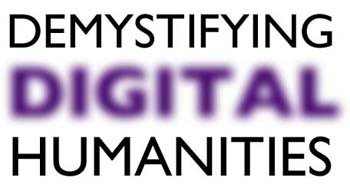Becoming Aware of Accessibility
One of my favorite aspects of the internet is my ability to zip around haphazardly — noticing links in a site’s sidebar, opening links in new tabs so that they’ll be ready for me to read later if I’m in the middle of an article, and alternating between skimming and focusing, depending on what I’m reading, and how important it is at any given moment. I also use the status bar at the bottom of my browser to check where a link points to, and avoid potential spammy or ad-filled sites.
These abilities are available to me because I’m not visually or cognitively impaired (at least, not beyond needing reading glasses).
The web is my primary mode of handling finances, looking up gluten-free foods and recipes, and staying informed about politics. It’s also one of my primary means of being social. I get frustrated when a webpage loads slowly, let alone when it won’t load at all. Ditto for YouTube videos.
I have a lot of privilege when it comes to the web that I’ve taken for granted. Most people living in 1st-world countries do. It’s very easy to make accessibility concerns something to get around to, rather than being proactive. The very nature of the web: overflowing with wonderful things — means that information on accessibility has to compete with urgent news, vital information, and cat videos.
However — as someone working to develop infrastructure supporting digital humanities at UW, I don’t want to ignore accessibility concerns any longer. I can’t, because the longer accessibility issues are ignored, the more harmful they become.
There are two statements that I’m keeping in mind as I work on improving the accessibility of this site, and other sites where I work:
There are easy choices to make and steps to take that will make a site more accessible.
It is more difficult to retrofit accessibility than it is to include it during original construction.
If you’re new to thinking about web accessibility, then this introduction from WebAIM (Web Accessibility In Mind) is a good place to start for an overview. I recommend following it up with Liz Henry’s essay on the significance of accessibility.
I also recommend attempting to navigate the web using a screenreader. For those of you with Apple computers, you already have access to VoiceOver Utility — just search for it, activate by pressing Command + F5, and start the short tutorial, which you’ll need to at least partially complete in order to test it on a website. For those of you with PCs, you can try out the University of Washington’s WebAnywhere screenreader, or try the free screenreaders listed at Usability Geek. You can also test any site’s accessibility using WebAIM’s Wave site.
As someone with a mixed background of formal and independent study of programming, I’ve often felt overwhelmed when I’ve done accessibility checks, because there are things that I don’t know how to fix. Accessibility becomes a greater issue any time that a platform (like WordPress, Blogger, Facebook, etc.) is used, because users don’t always have full (or any) access to the back end, so making adjustments may be difficult or impossible. But it’s important to move past feeling overwhelmed, and focus on the improvements that can be made.
If you’re a member of the UW community, then one of your best resources will be the UW Web Accessibility pages, and the staff who support greater web accessibility. Check the Collaboration on Accessible IT page for events and specific support resources.
If you want to understand the guidelines for accessibility in depth, your best resource will be the Web Content and Accessibility Guidelines (WCAG) 2.0, published by the World Wide Web Consortium (W3C), the international organization that determines standards for the web — not just for accessibility, but for HTML, and other web technologies. On the surface, the WCAG 2.0 is fairly easy to read, and it provides a lot of information and instruction for improving accessibility — though it can get technical if you dig down into the details.
If you’re more concerned about simply making improvements to your website, then here are three things you can do to start:
- Use alternative text when you display images.
- Avoid making links open in new windows or tabs.
- Caption your videos: you can use MAGPie (created by the National Center for Accessible Media) CaptionTube (for YouTube videos), or any of the tools listed on the Caption It Yourself page (created by the Described and Captioned Media Program (DCMP), a project funded by the U.S. Department of Education, and administered by the National Organization for the Deaf
To go further, check out 10 Easy Accessibility Tips from WebAIM.
If you’re working with WordPress (a popular platform for new digital humanists), then Joe Dolson’s slides from his presentation on WordPress Accessibility: Limitations and Benefits will be helpful, as will his WP Accessibility plug-in. (I’m cautious about recommending WordPress plug-ins, but I’m endorsing this one based on the number of versions it’s gone through (meaning that Dolson maintains it carefully to make sure that it will keep working even as WordPress changes).
One final set of recommendations: test your site(s) as they change, talk to people, and listen. Remember, if someone tells you that your site is inaccessible, it’s because they’re interested in your content, and want to explore it. Many people feel uncomfortable when someone calls attention to their privilege, but it’s important not to take it personally. Instead, it’s better to focus on finding a solution to the accessibility problem in question.
